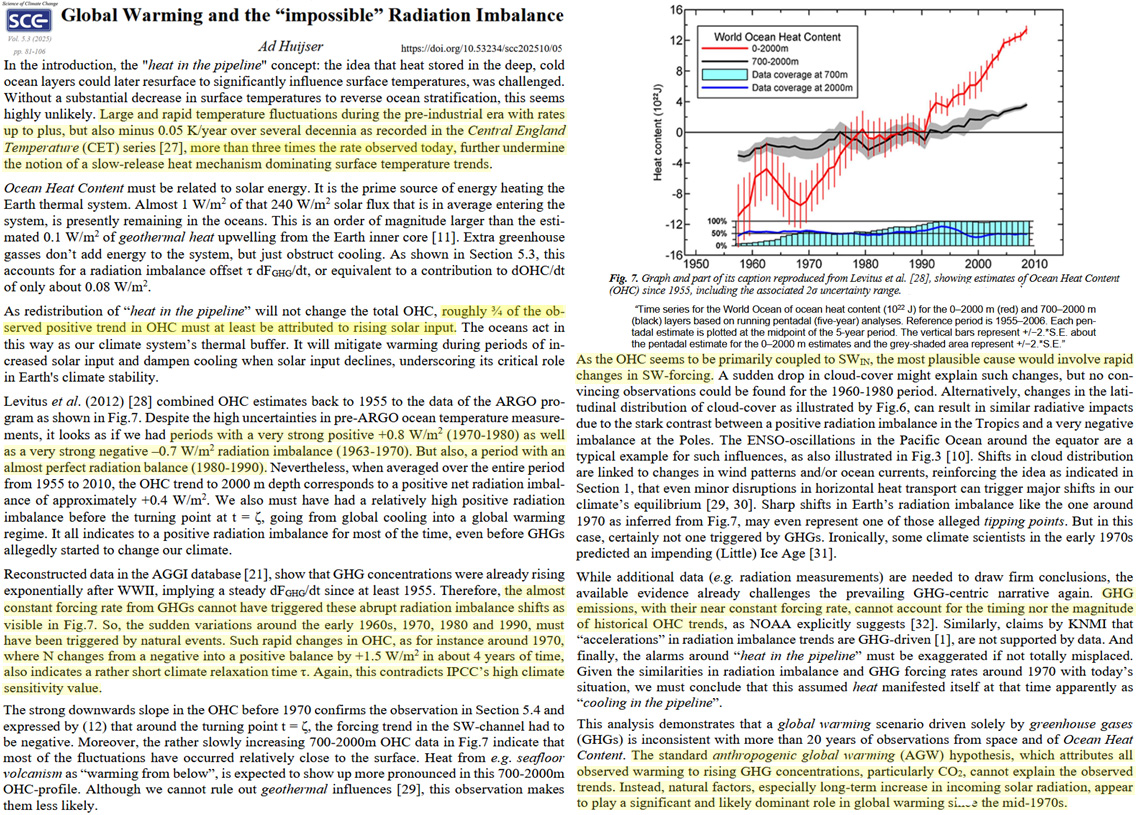Approximately 75% of the increase in the global ocean heat content must be natural, or attributed to an increase in solar forcing.
The manifestation of what is commonly referred to as “global warming” is predominantly (93%[1]) depicted as an increase in ocean heat content (OHC). Only 1% is indicated by an increase in surface air temperatures. Rising OHC is the parameter of modern warming.
According to Levitus et al. (2012)[2] the 1955-2010 temperature increase corresponding to the rise in OHC amounts to just 0.09°C in the 0-2000 m layer.
A new study[3] calls attention to the abrupt warming and cooling OHC trends since 1955 in this dataset that cannot be attributed to linearly-rising CO2 emissions.
The OHC changes manifest short-term “periods with a very strong +0.8 W/m² (1970-1980) as well as a very strong negative -0.7 W/m² radiation imbalance (1963-1970). But also a period with an almost perfect radiation balance (1980-1990).”
In contrast, the increase in forcing from the gradual rise in CO2 is wholly inconsistent with these dramatic decadal-scale fluctuations.
“[T]he almost constant forcing rate from GHGs [greenhouse gases] cannot have triggered these abrupt radiation imbalance shifts [and therefore] the dramatic radiation balance shifts must have been triggered by natural events.”
It is estimated that ¾ of the rising ocean heat content (OHC) trend since 1955 must be natural, or due to the “rising solar input” associated with the decline in cloud (and aerosol) albedo. In sum, rising CO2 “cannot explain the observed [OHC] trends.”

Image Source: Huijser, 2025[4]
References
- ^ 93% (agupubs.onlinelibrary.wiley.com)
- ^ Levitus et al. (2012) (agupubs.onlinelibrary.wiley.com)
- ^ new study (doi.org)
- ^ Huijser, 2025 (doi.org)
